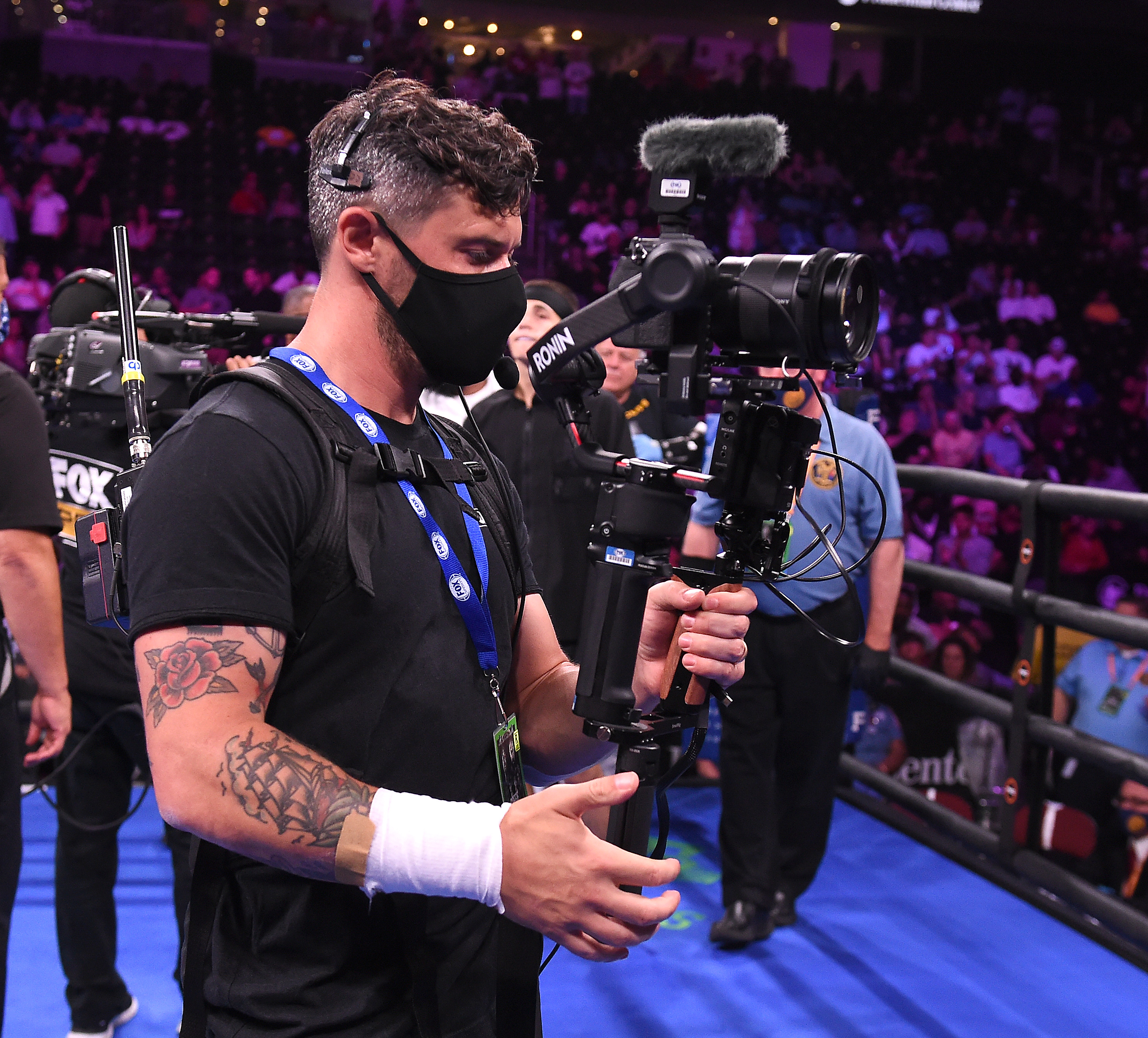
LAS VEGAS—TV production of boxing has seen a series of incremental advancements over the years, but at its core not a lot has changed over at least the past quarter century, says Michael Davies, senior vice president of field operations at Fox Sports.
“At the end of the day, boxing defies technology. It’s just two guys fighting in a 24-by-24-foot ring, and there’s something really cool about that,” he says.
Fox Sports will leverage those incremental advancements with its production of "Wilder-Fury III" Oct. 9 from T-Mobile Arena in Las Vegas. (WBC champion Tyson Fury will take on former heavyweight champion Deontay Wilder at 9 p.m. EDT on Fox Sports PPV and ESPN+ PPV.)
“Try as you might—sensors in the glove and all the weird things people have tried in the past—at the end of the day for TV and boxing, it’s just about clear pictures and awesome replays, and that’s what’s great,” he says.
Incremental Advancements
Fox Sports will deploy more than 30 cameras for the fight. Several will be wireless, including the Fox Sports Megalodon shallow-depth-of-field camera frequently used during the broadcaster’s coverage of football.
Among those trained on the ring will be cameras mounted on JITACAM cranes—inverted jibs hanging from the ceiling, one of which can move back and forth 100 feet along a track—on opposite sides of the ring; a Dynamicam—effectively a mini SkyCam suspended on four wires above the crowd on the reverse side of the ring for drone-like shots; a 6k camera from C360 Technologies, the same company responsible for pylon cameras, suspended over the ring; and a Sony HDC-4800 4K camera capable of 1,000 fps outfitted with a special PL-mount 8K lens from Fujinon to capture “Raging Bull”-like imagery and positioned low reverse.
“The reason why the Sony 4800 is a special camera is that it’s a large format sensor camera, it’s super motion and it has a PL lens mount,” explains Davies. “The camera has a 4K sensor, but since this lens is built for 8K it lets in a lot more light, so we can go at the fastest frame rate of the camera [1,000 fps] without getting a whole bunch of grain.”
The professional video industry's #1 source for news, trends and product and tech information. Sign up below.
The Dynamicam on the reverse side has solved what Davies describes as “a true audio vs. video problem” that has plagued some fight productions. “The Dynamicam will fly above the audience, but in the past it was above the ring,” he says. That prevented mounting microphones from being suspended by the grid over the ring.
“By doing the Dynamicam and reorganizing some things, we’re returning those mics to the mixer where a mixer can really show his stuff,” he says. “Returning those three mics to the ring—probably the most important mics—makes a huge difference.”
The C360 camera—Camera 5—suspended above the ring is a high-res panoramic camera that can capture the entire ring and those immediately surrounding it with its ultra-wide lensing. “The lens is so wide it almost sees behind itself, so natively the image is all warped—sort of like a fisheye [lens],” he says. However, special software “flattens the image,” making it usable for television.
With the software-processed video, the broadcaster will be able to zoom in on an area of interest in the ring in the same way some broadcasters have used 4K and even 8K cameras mounted high above football stadiums together with area-of-interest zooming to isolate critical game play for broadcast.
“It’s just got this interesting cinematic feel, but then it can do anything a robotic camera can do,” he adds.
All ring cameras except for the C360 camera natively support super slow motion. As of mid-week (when the interview for this story was conducted), Davies was considering using Fox Sports/EVS’ XtraMotion cloud-processed, frame-interpolation-based slow motion on some C360 camera shots.
Going Home
Having spent a lot of his early TV career doing boxing for HBO, Davies also relishes the chance to rekindle old professional relationships with some of the people he worked with on those matches so many years ago.
“I have Skip and Joni on Cameras 1 and 2,” he says. “They used to do those cameras when I was coming up. Some of the utility crew are the sons and daughters of the camera people I used to work with back then.”
“In some ways, boxing has not changed all that much, and this is what I like about it,” he adds.
“I cut my teeth 25 years ago at HBO, and boxing has always been in my career and my blood. So what’s cool about coming back to boxing—you know we started this package a few years ago—is frankly how little it had changed in terms of the boxing business, the locations and even the people.”
Phil Kurz is a contributing editor to TV Tech. He has written about TV and video technology for more than 30 years and served as editor of three leading industry magazines. He earned a Bachelor of Journalism and a Master’s Degree in Journalism from the University of Missouri-Columbia School of Journalism.

